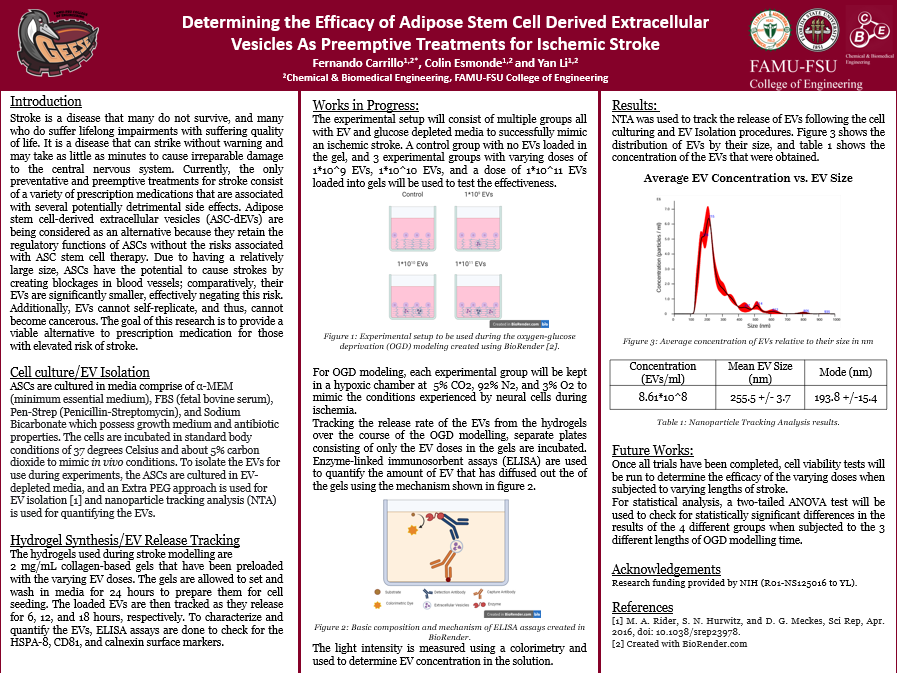Research Symposium
24th annual Undergraduate Research Symposium, April 3, 2024
Fernando Carrillo Poster Session 1: 9:30 am - 10:30 am /409
BIO
Hello, my name is Fernando Carrillo. I am a senior in Biomedical Engeering from Miami, Florida. My primary interest in research is developing therapeutics for diseases that are considered untreatable by modern medicine. In this case, it is attempting to create a treatment that can work to help patients to recover form ischemic strokes. I hope to one day serve my community as an orthopedic surgeon.
Determining the Efficacy of Adipose Stem Cell Derived Extracellular Vesicles As Preemptive Treatments for Ischemic Stroke
Authors: Fernando Carrillo, Dr. Yan LiStudent Major: Biomedical Engineering
Mentor: Dr. Yan Li
Mentor's Department: Chemical and Biomedical Engineering Mentor's College: FAMU-FSU College of Engineering Co-Presenters:
Abstract
Stroke is a disease that many do not survive, and of those who do, many suffer lifelong impairments with suffering quality of life. It is a disease that can strike without warning and can take as little as minutes to cause irreparable damage to the central nervous system. As of now, the only preventative and preemptive treatments for stroke consist of a variety of prescription medications that come with several potentially detrimental side effects. Adipose stem cell-derived extracellular vesicles (ASC-dEVs) are being looked to as an alternative because they retain the ASCs regulatory functions without the risks associated with ASC stem cell therapy. Due to their relatively large size, ASCs have the potential to cause a stroke by creating blockages in blood vessels; on the other hand, their EVs are significantly smaller effectively negating this risk. Additionally, EVs cannot self-replicate, and as such, cannot become cancerous. In order to study ASC-dEVs as potential candidates for preventative care, they will be loaded into collagen hydrogels at varying doses. Following this, ASCs will be seeded on the surface of the gel and allowed to adhere to it before being placed in a hypoxic chamber for varying lengths of time for stroke modelling. The EVs will be characterized using ELISA assays, and cell viability assays will be run to determine the effectiveness of the treatment following a brief recovery period post-stroke modelling. The hope of this research is to provide a viable alternative to prescription medication for those with elevated risk of stroke.
Keywords: EVs, Stem Cells, Therapeutics, Stroke


